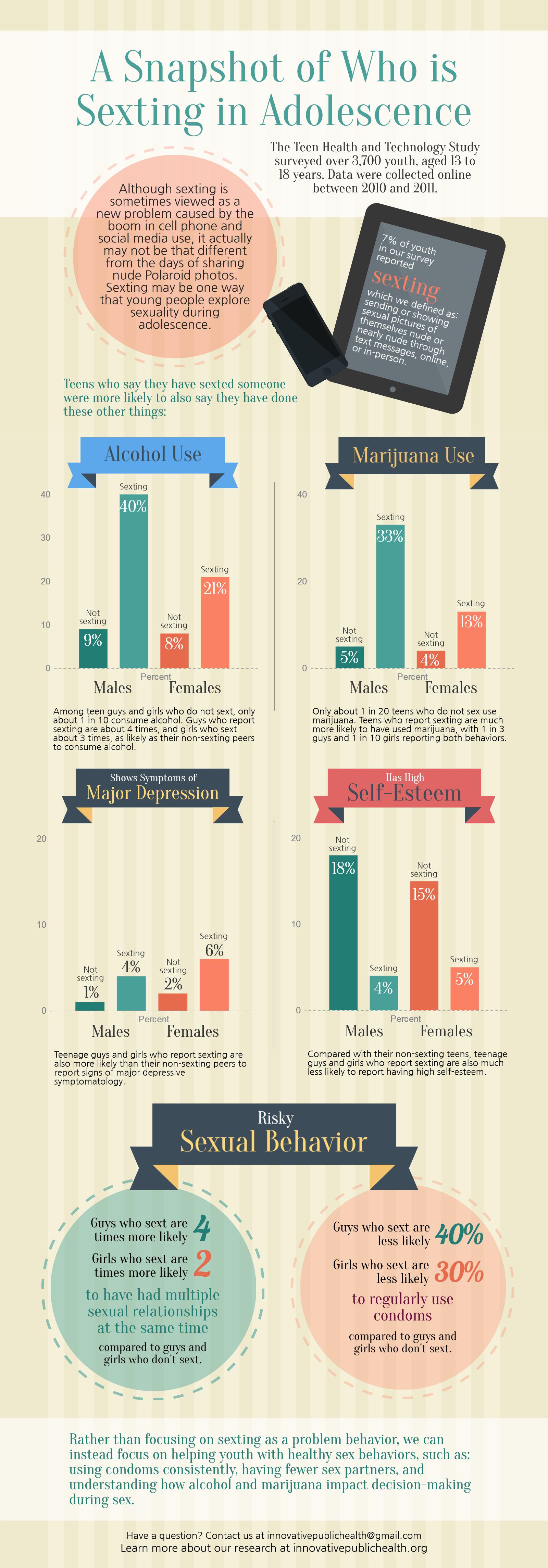Teen sexting isn’t always a problem behavior, but part of sexual exploration.
Although “sexting” is sometimes portrayed as a recent problem caused by new technologies (e.g., cell phones, social media), people have shared self-created nude photos since the days of the Polaroid camera. Nonetheless, parents may be concerned what it may mean if their child is sharing sexually explicit photos of themselves through technology. In our new infographic, we highlight our study findings on some ways teenagers who sext may differ from teens who do not sext.
This infographic also suggests how we can recognize that sexting is not so much a problem behavior of the digital age, but an indication that youth may need mental health support and learn behaviors for healthy sex. Data are from the Teen Health and Technology study, which surveyed over 3,700 youth, aged 13-18 years old.
This infographic is based on our publication: Ybarra ML, Mitchell KJ. “Sexting” and its relation to sexual activity and sexual risk behavior in a national survey of adolescents. J Adolesc Health. 2014;55(6):757-764. doi: 10.1016/j.jadohealth.2014.07.012
To learn more from the same study, check out our article How Many Teens Are Actually Sexting? and infographic Sexting among Teenagers: Details from a National Study.
Learn more about our research at Center for Innovative Public Health Research (link is external).
Find us on Google+, Twitter, and Facebook.
Acknowledgments: Thank you to Emilie Chen for her contributions to this blog.

